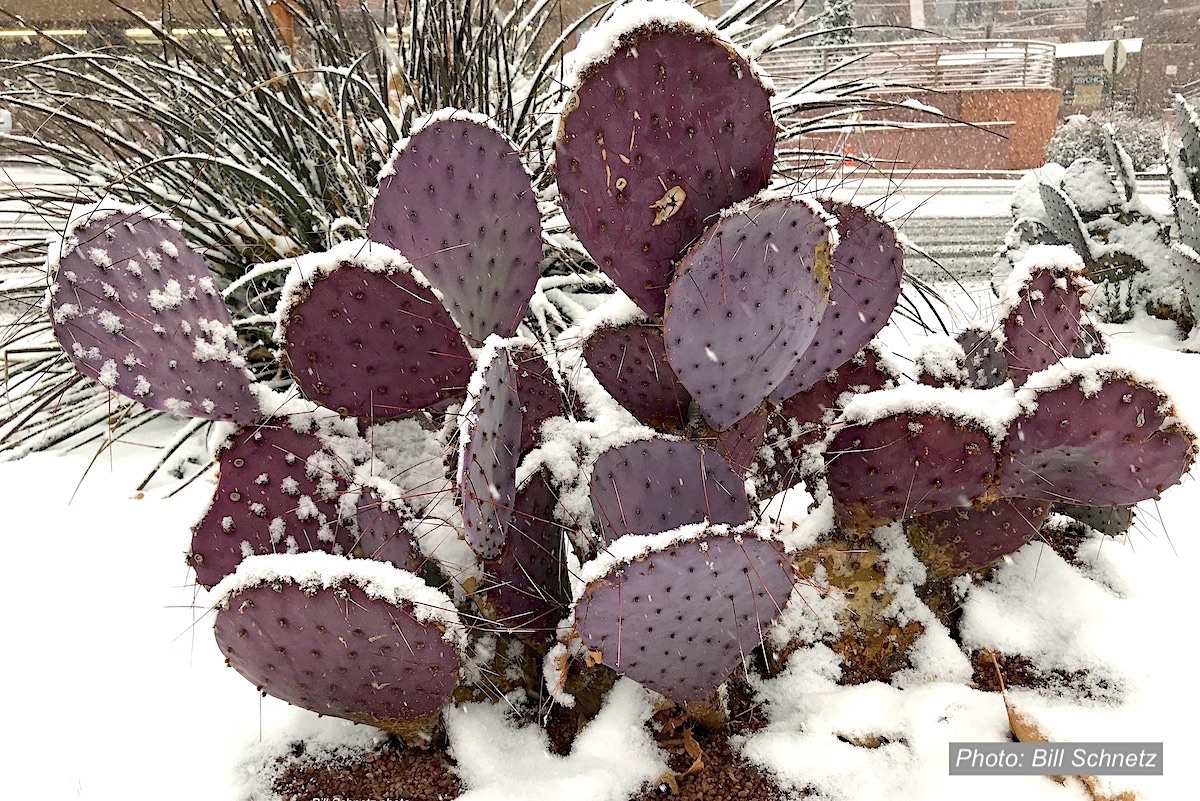
Winter Care for Frost-Tender Succulents
Based on where you live, here's how to get cold-sensitive South African succulents---like crassulas, euphorbias, senecios and aloes---through a North American winter.
Coastal CA from the Bay Area south
Your climate is more similar to South Africa's than anywhere in the US. You banana-belters don't get frost, and winter humidity and rainfall are low, so simply make sure your succulents get good drainage during storms.
CA Inland
Welcome to my own imperfect climate! At 1,500 feet in the foothills NE of San Diego, frosty nights follow rain. When temps are forecast to drop below 32 F, I drape succulents with frost cloth or floating row covers.
Northwest, Northeast, Midwest
You'll need to overwinter all but hardy succulents indoors---perhaps your basement---or inside a climate-controlled shelter.
Go to "How to overwinter succulents"
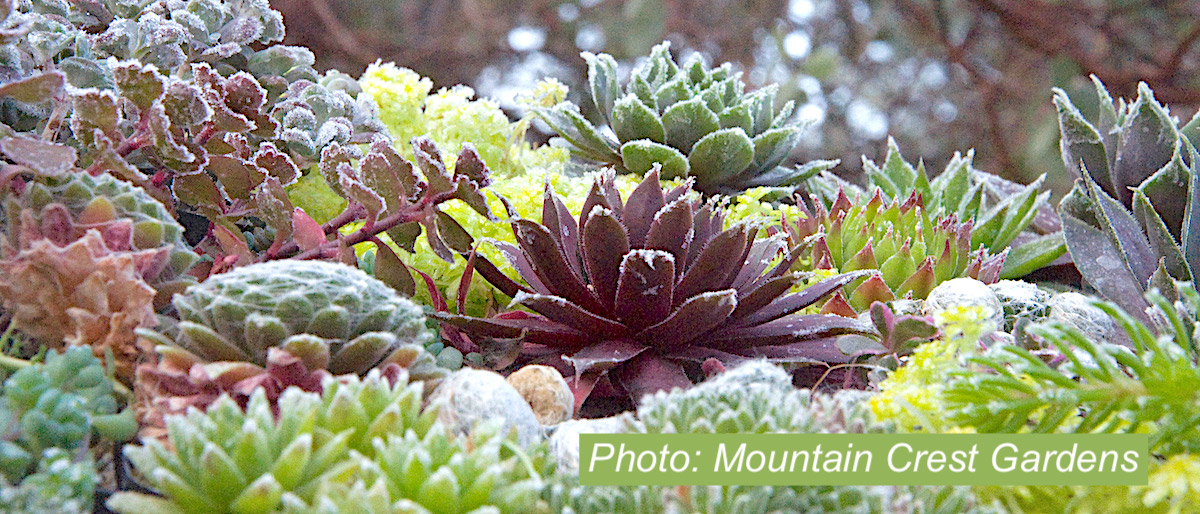 Most sempervivums, many sedums and a few other types of succulents (generally not from South Africa) are frost-hardy down to -20F (Zone 5). Use them to add vibrant colors and winter interest to rock gardens, containers and more.
Most sempervivums, many sedums and a few other types of succulents (generally not from South Africa) are frost-hardy down to -20F (Zone 5). Use them to add vibrant colors and winter interest to rock gardens, containers and more.
Click to Learn About Hardy Succulents
Desert Southwest
Keep your South Africans on a covered patio, and embrace (well, not literally) succulents better suited to your region, such as cacti, agaves, dasylirions and yuccas.
Southeast
Plants from dry regions don't like damp, humid climates. This excerpt from Designing with Succulents (2nd ed.) explains those suitable for your area.
Do you have information to share about your own climate and succulents that do well for you? Please comment below!
How to Keep Succulents Happy Indoors
Indoor Succulents Tips to help your succulents thrive inside If you love succulents but have no way to grow them outdoors, good news: Numerous varieties thrive indoors. Below are cultivation tips and a photo gallery of 40+ indoor succulents that are readily available. >> Jump down to the photo gallery Place your succulents near a…
How to Grow Tender Succulents in Cold, Northerly Climates
With the exception of sempervivums, jovibarbas, many sedums and yuccas, and certain cacti and ice plants, the majority of succulents are frost-tender. Although they can tolerate temps down to freezing and in excess of 90 (if shaded), between 40 and 80 degrees is ideal. But you can grow any succulent, anywhere, if you understand its needs.
Overwintering
Overwintering Succulents How to keep succulents happy during the cold winter months Where you live makes a big difference when it comes to the well-being of your succulents in winter. Most varieties go dormant in winter and are frost-tender, meaning they can’t handle temps below 32 degrees F. Winter Conditions That Damage Succulents These common…
Cold Hardy Succulents: Details, Photos and Varieties
Cold-Hardy Succulents: Details, Photos & Varieties Looking for succulents that go below freezing? You’re in the right place! About cold-hardy succulents The common cold-hardy succulents shown here can handle northern winters, snow, rainstorms (if given excellent drainage) and summer dry spells. Sedum (stonecrop) Trailing varieties are lovely as ground covers and in rock gardens, terraces and hanging…

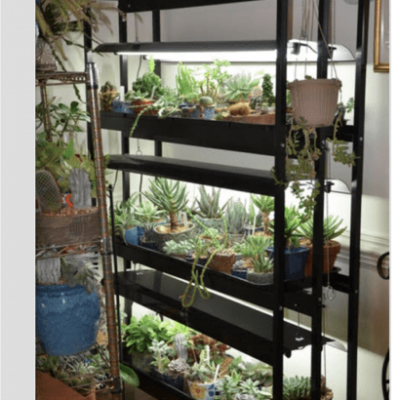

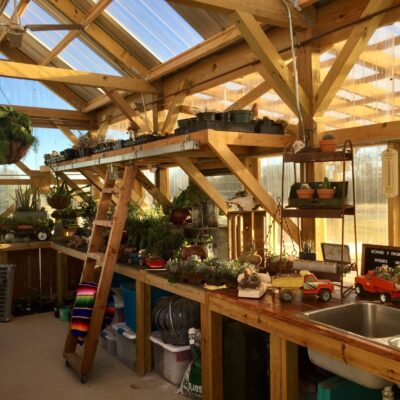
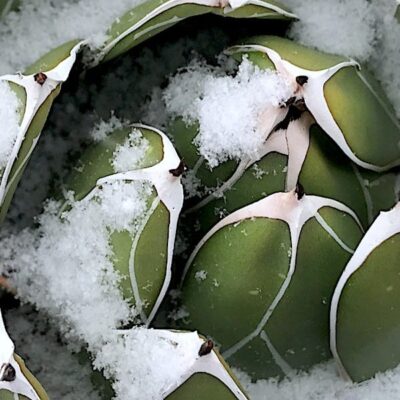
Hi Deborah, I have some deep purple/black spots on my Pachyphytum Oviferum and I can’t figure out what is wrong.. The leaves are plump and firm but this discoloration seems to be spreading. The plant gets lots of morning sun. It’s been anywhere from the high 20s to 40s at night but not under 28 so I thought it would be ok? Now I wondering if this is happening because we’ve had some severe shifts in weather where it’s low 40s at night and then 78 in the day. The newest growth looks great. Because the leaves are so plumb and firm I don’t think it’s a watering issue. You can see pics on my Instagram account. PS – your mealy bug post was great! Thanks!
Hi Tracey — Black spots that originate from the stem of the plant (i.e. from internal causes) are usually rot. If black spots are on the surface of the leaves and not near the stem, they could be caused by a number of things, but from your description, I’d guess sunburn. Pachyphytums, from Mexico, do best in an annual temperature range of 50 to 80F. The good news is that each healthy leaf contains all the moisture and nutrients needed to start a new plant. To start them, gently twist off the leaves and lay them atop (dry) potting soil out of direct sunlight. From the stem end, new little threadlike roots and beadlike leaves will grow. Once they drain the leaf and it withers, plant them.
I am a little confused because your video with Tom Jesch said that Pachyphytums aka moonstones did well with both high heat and low temps…but ok, I’ll go with this latest info. Thank you.